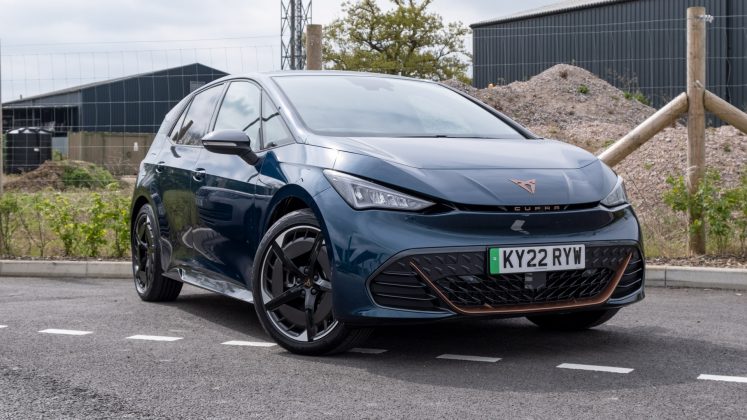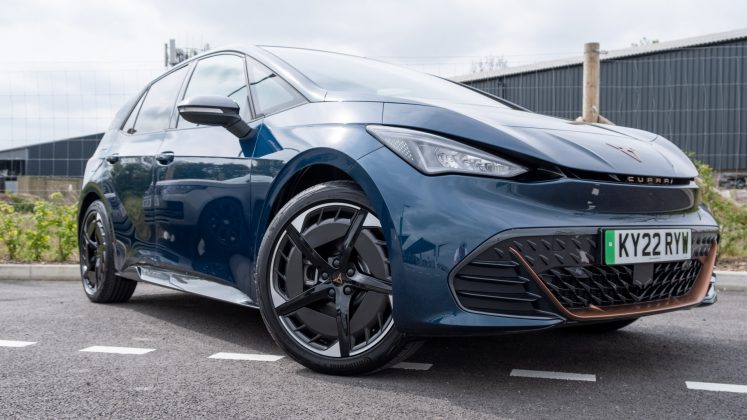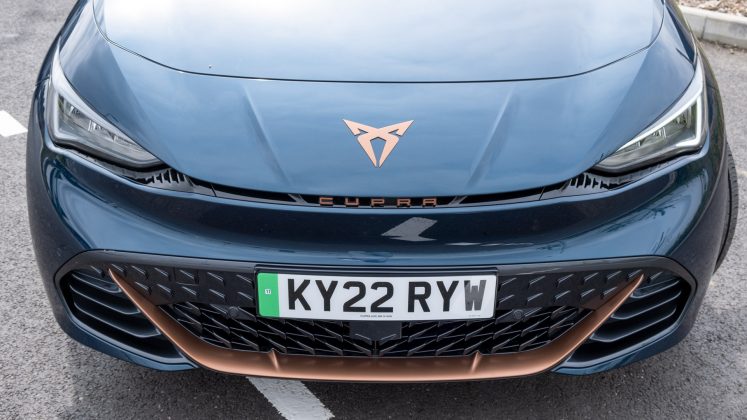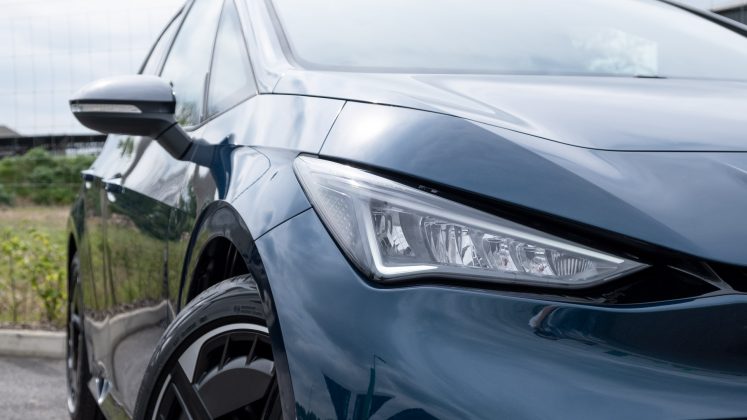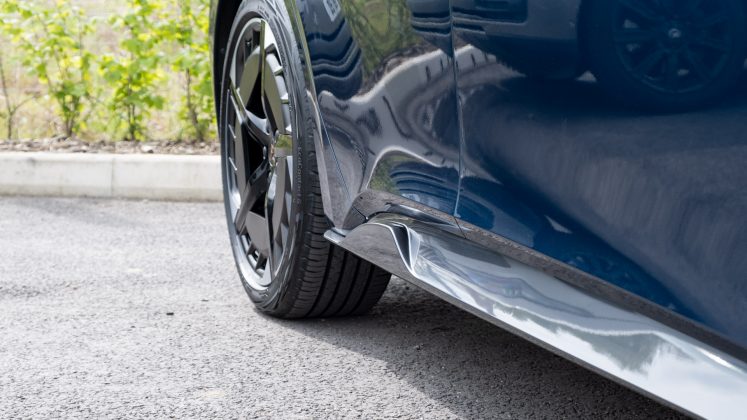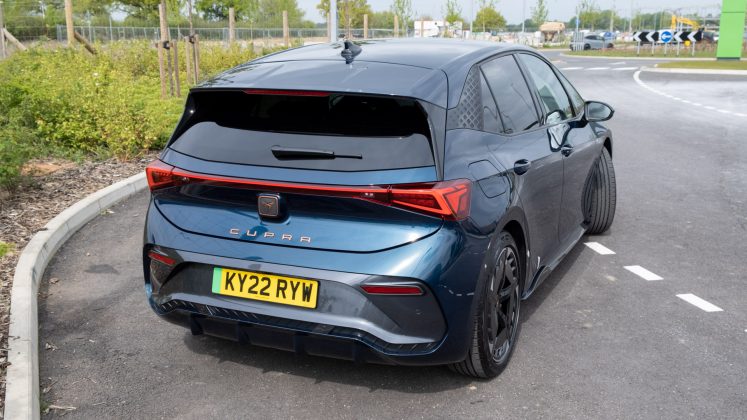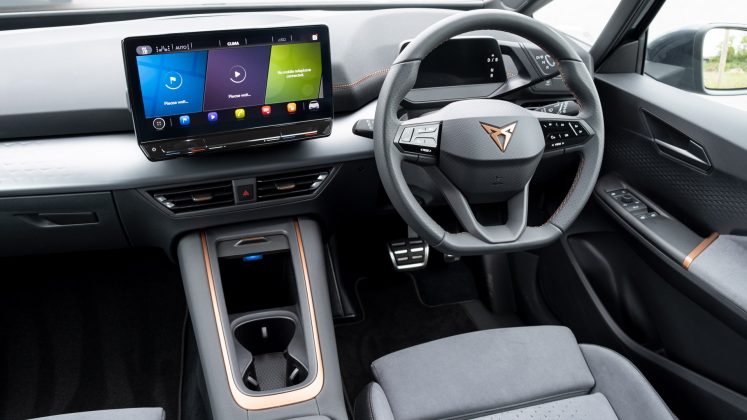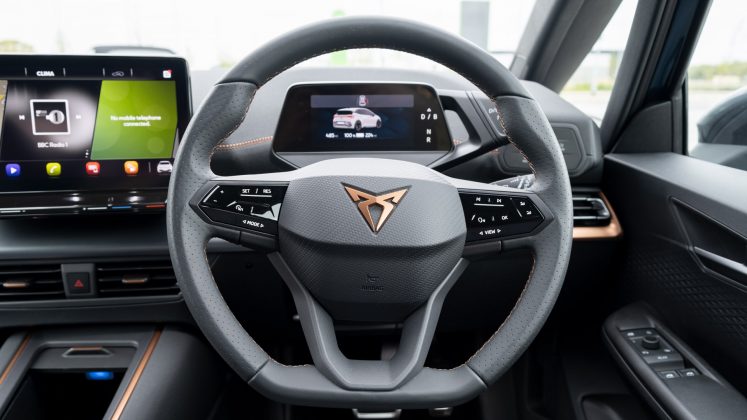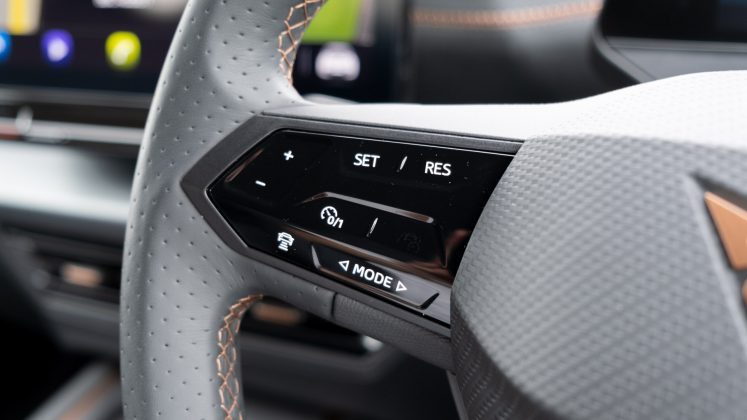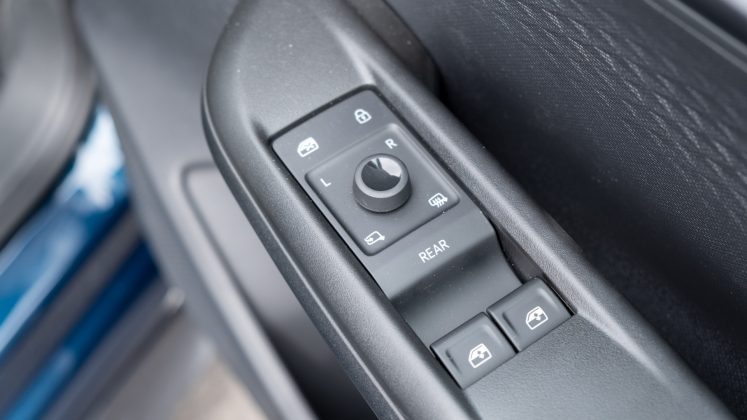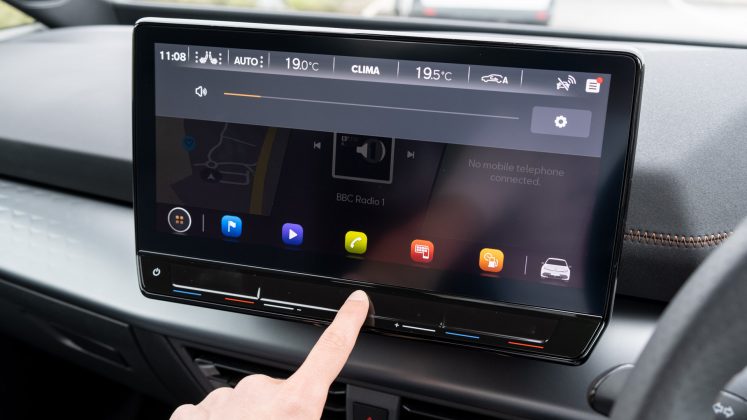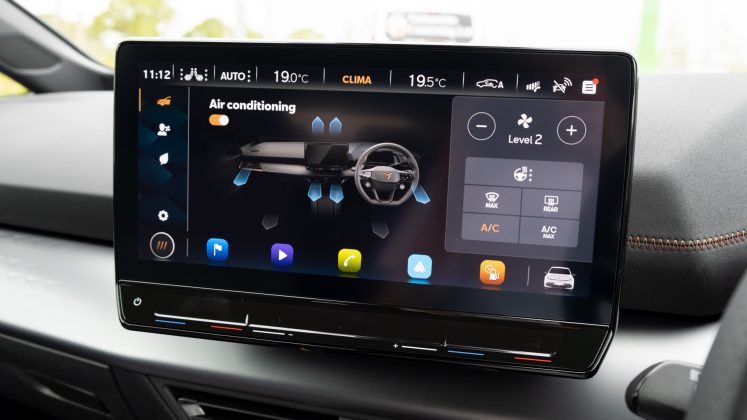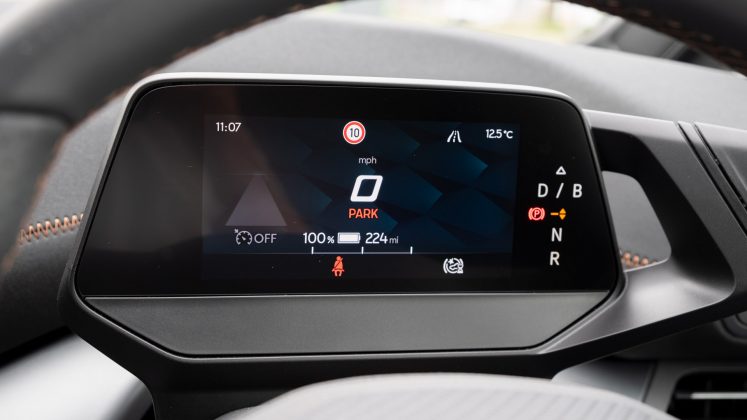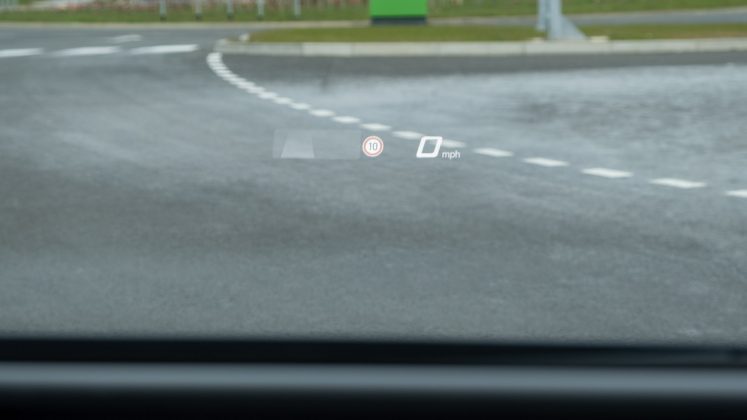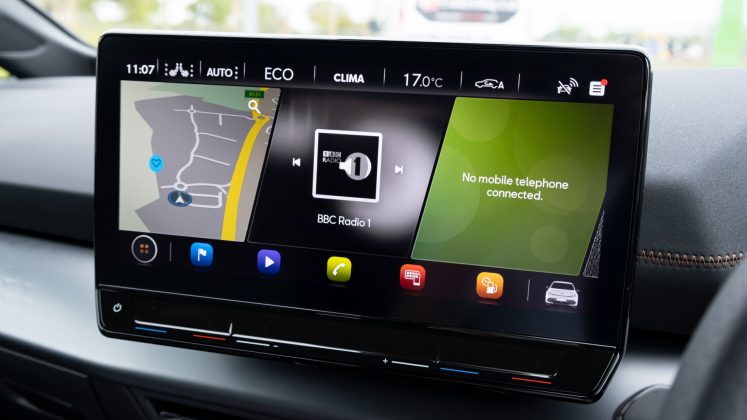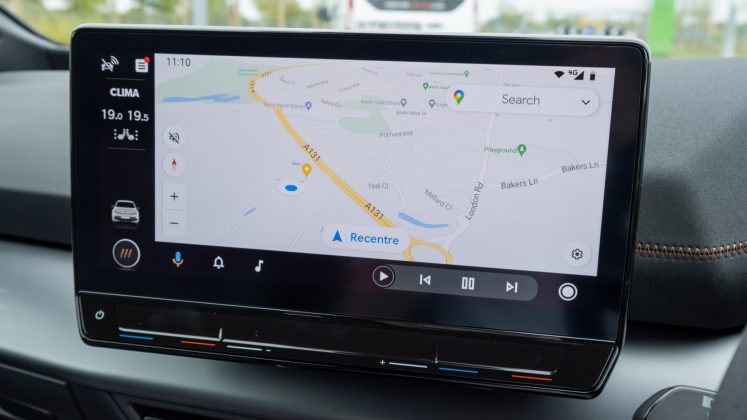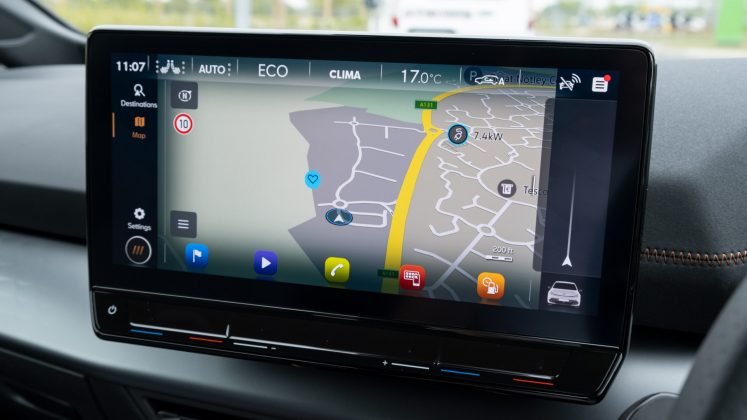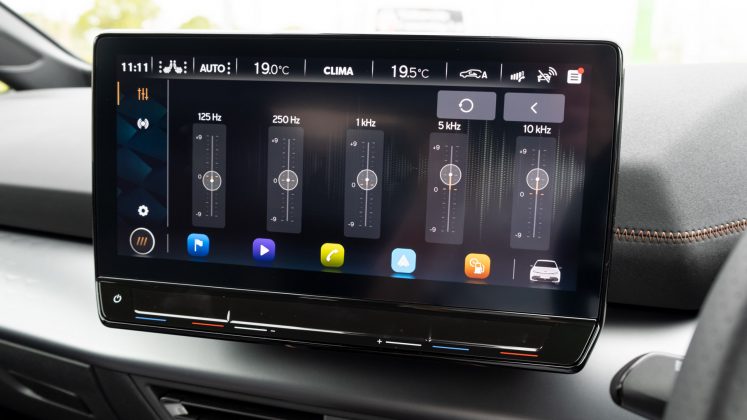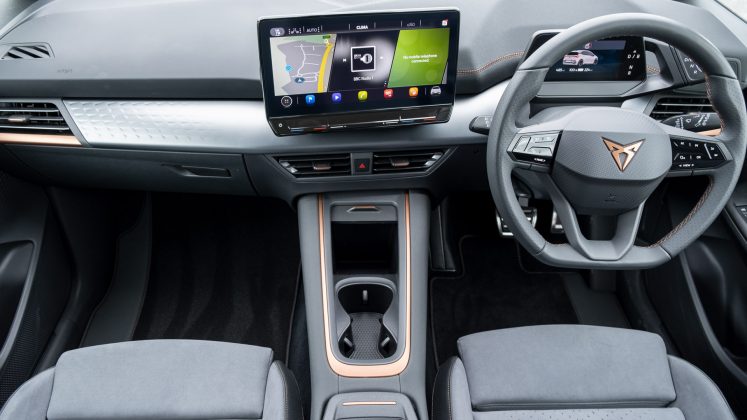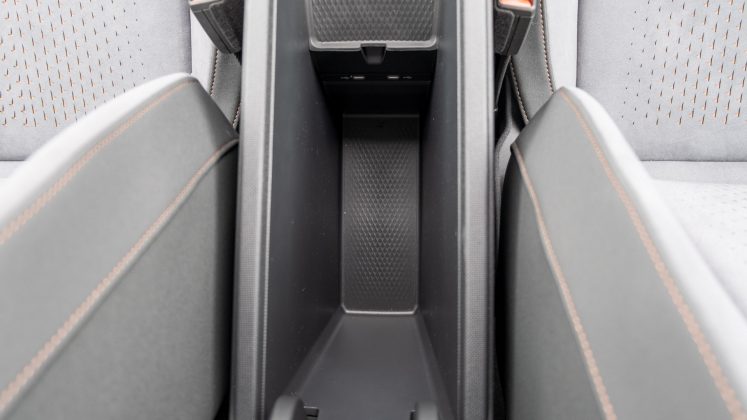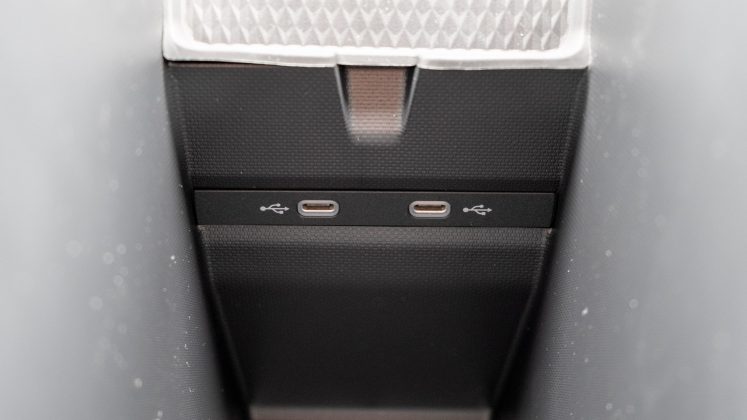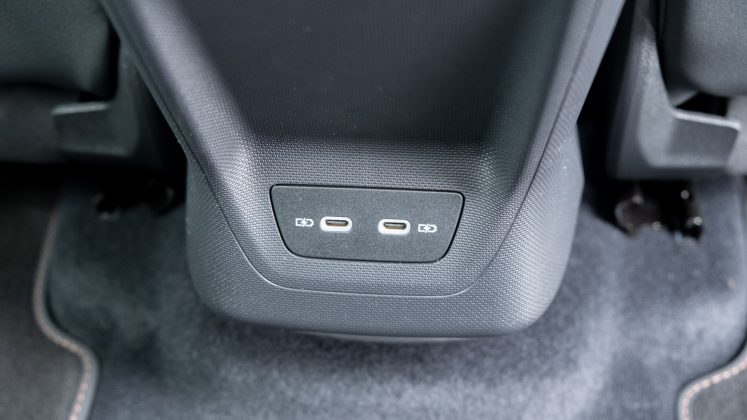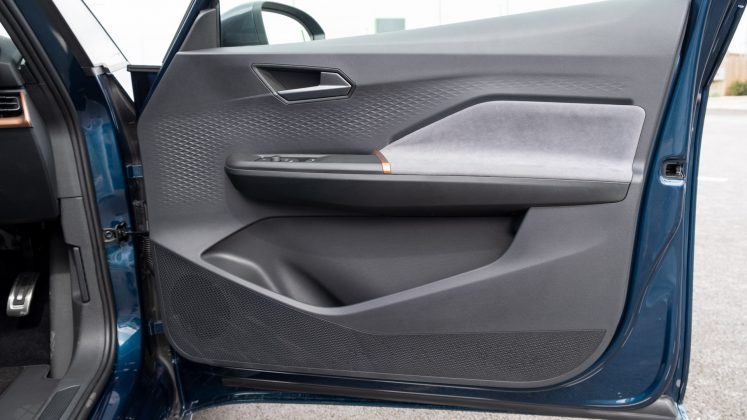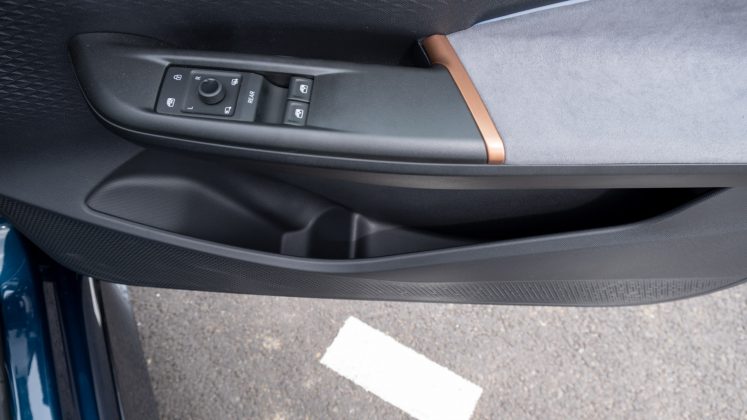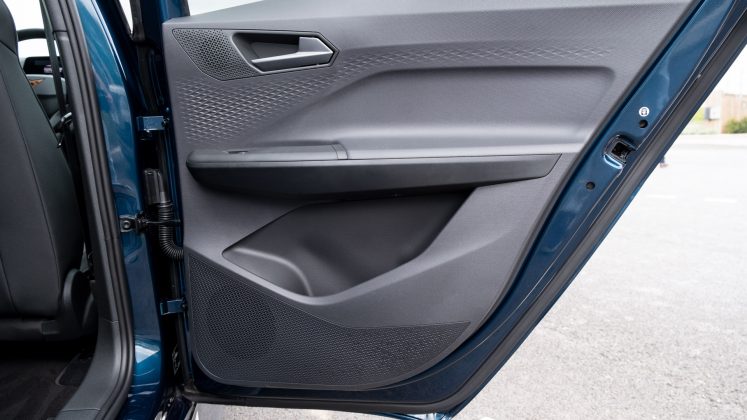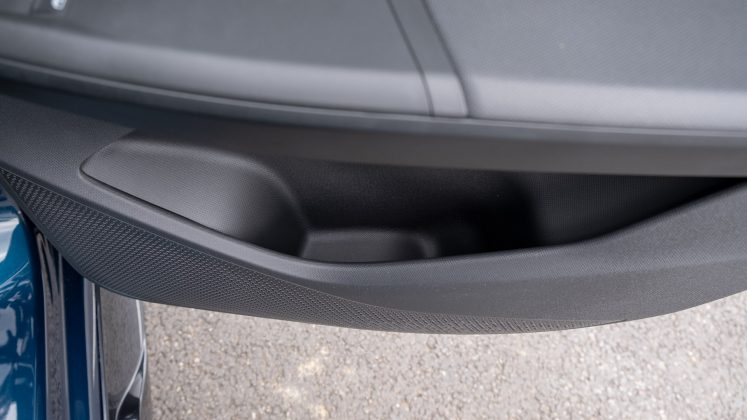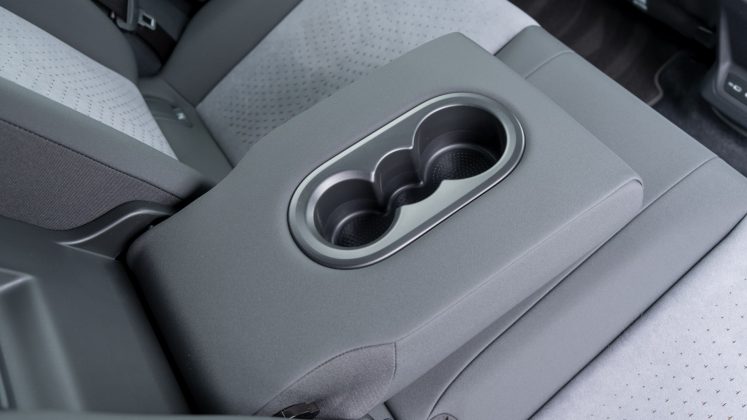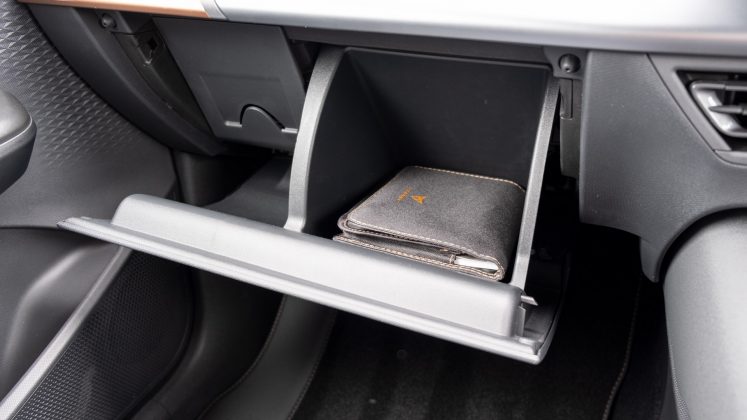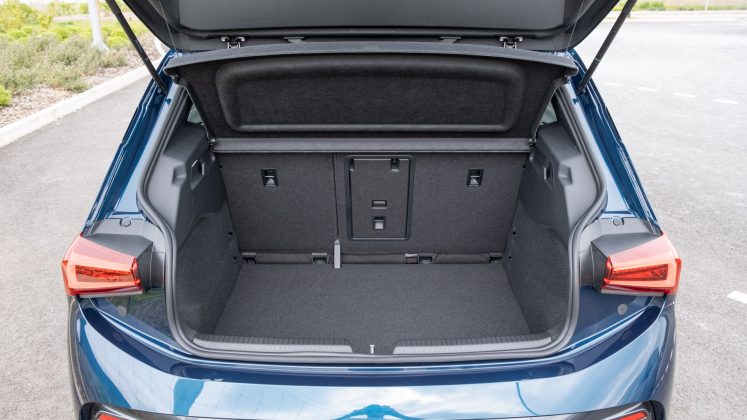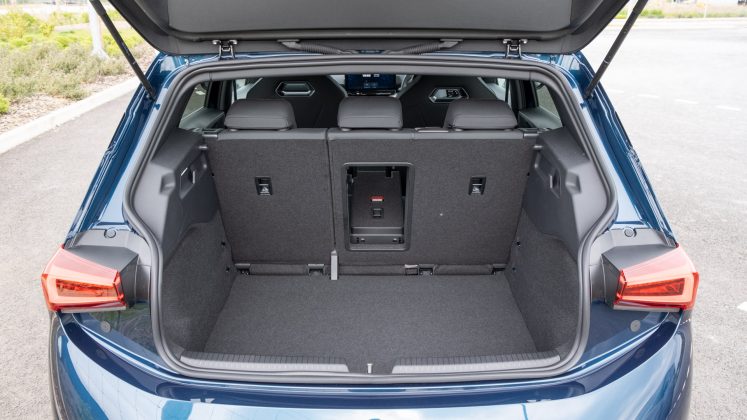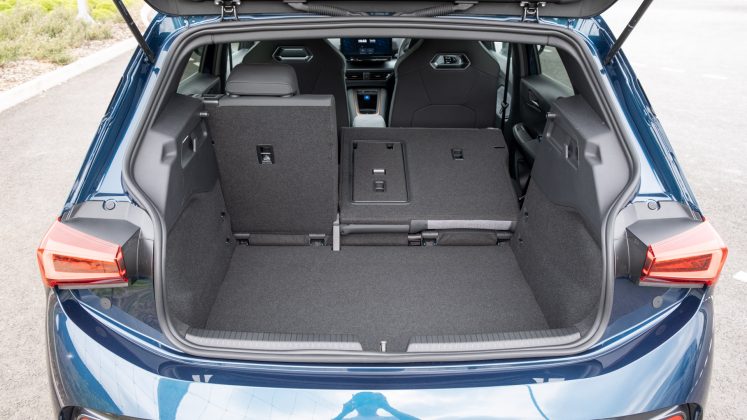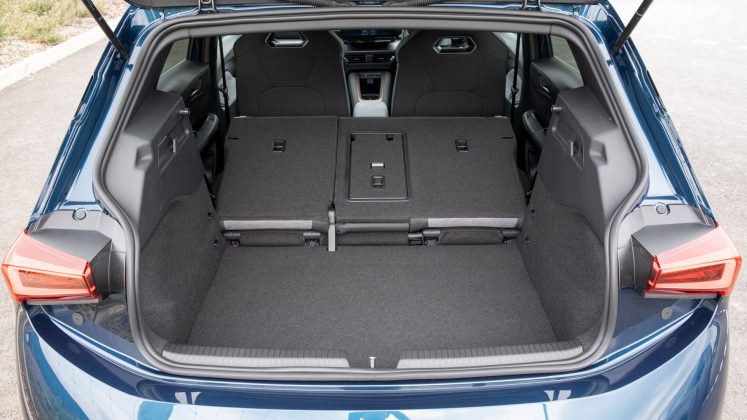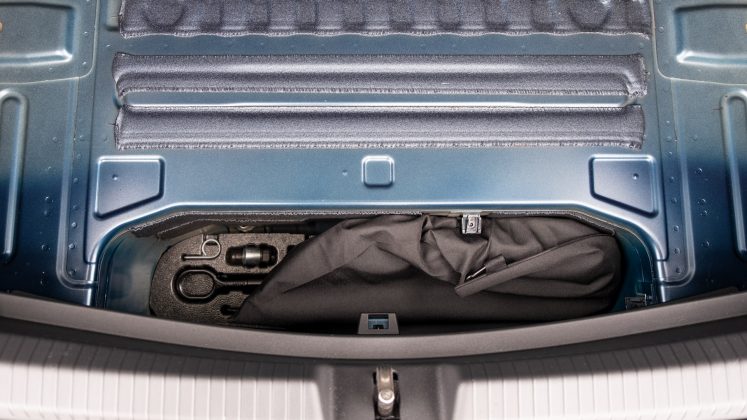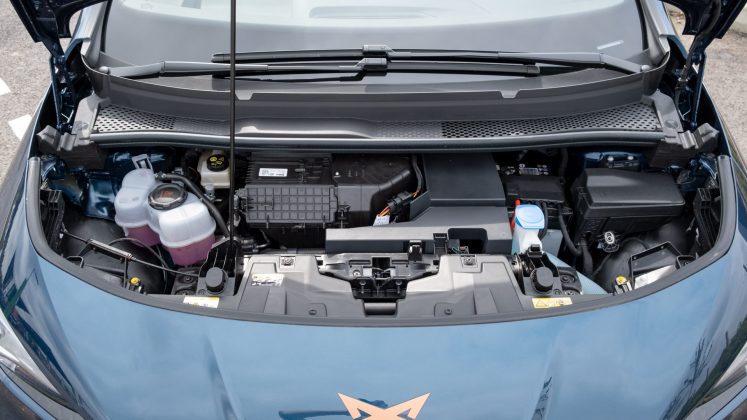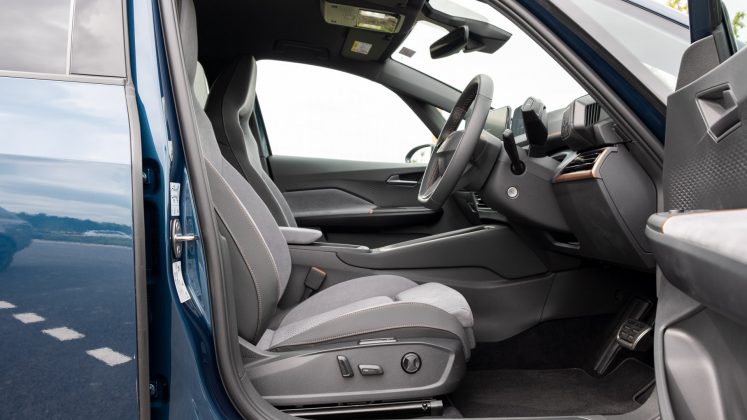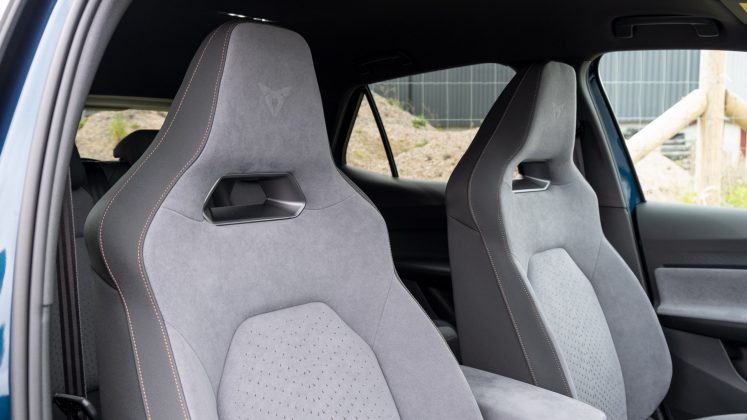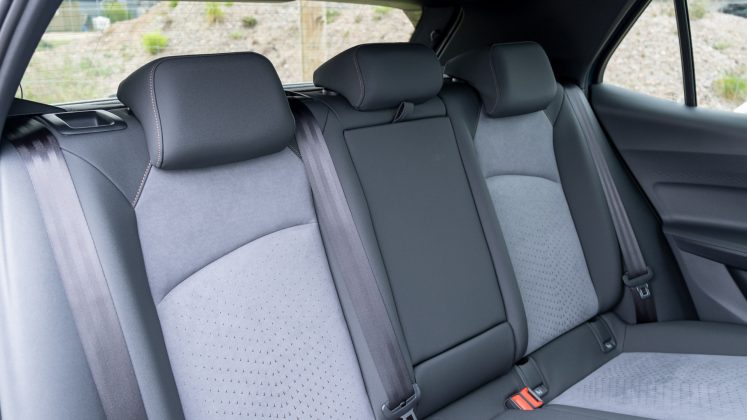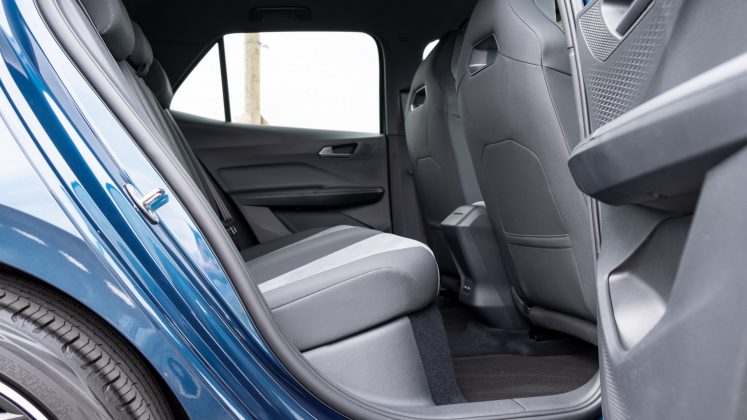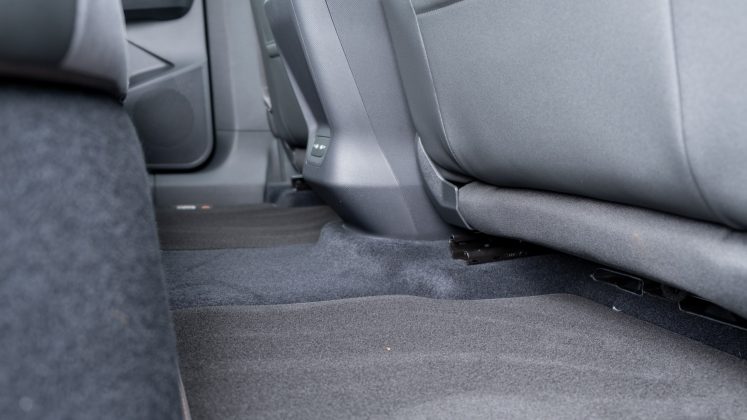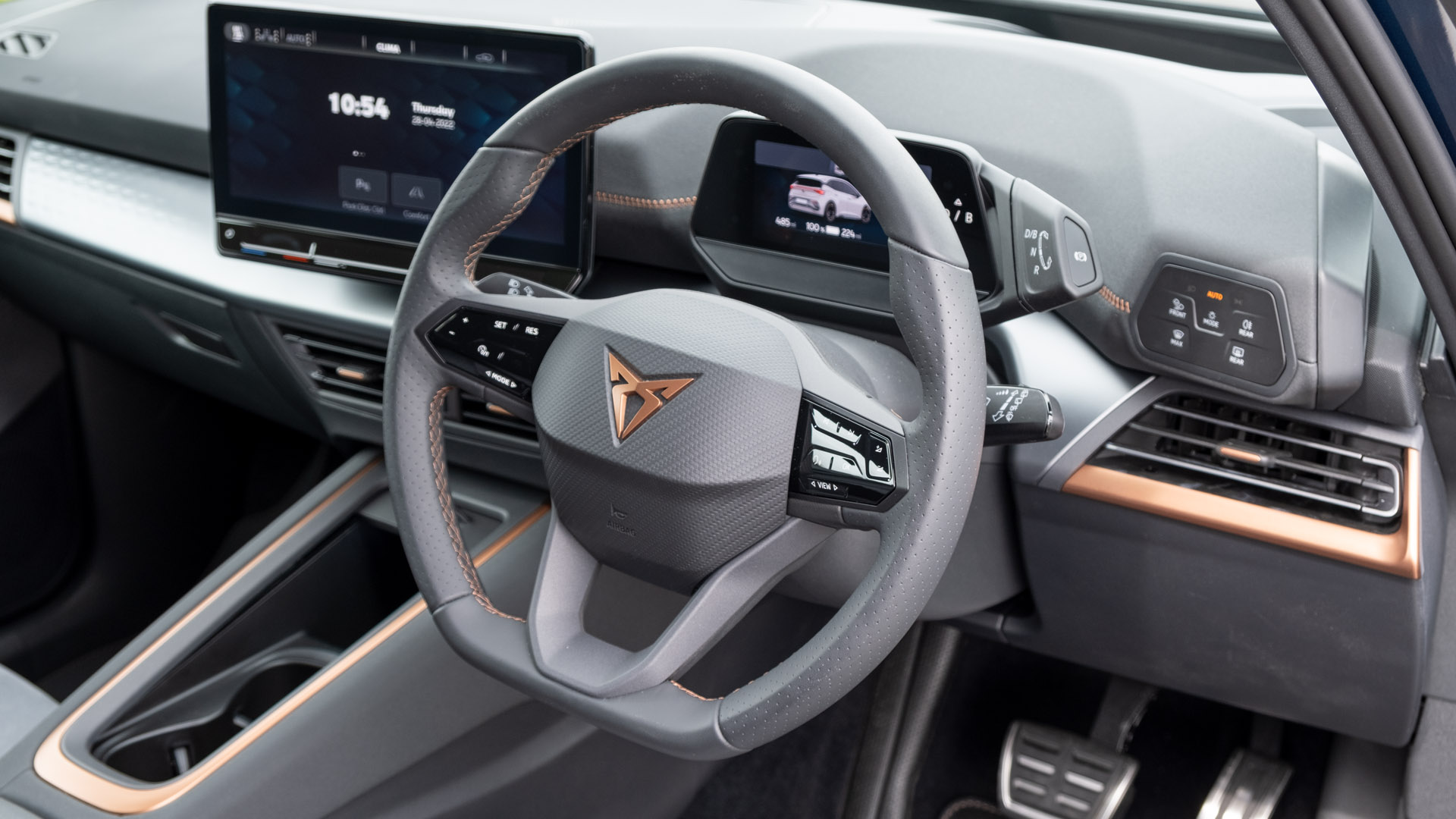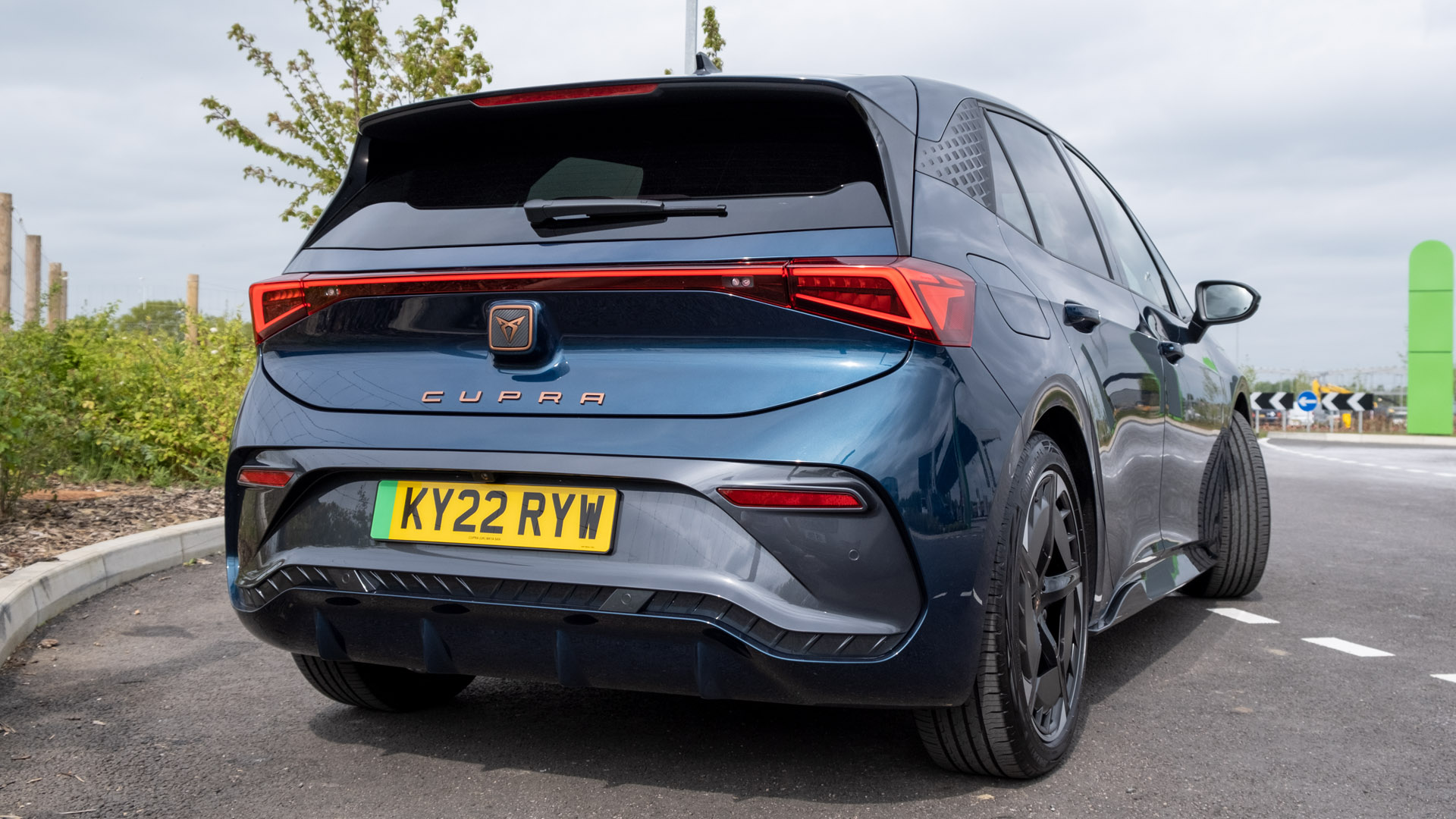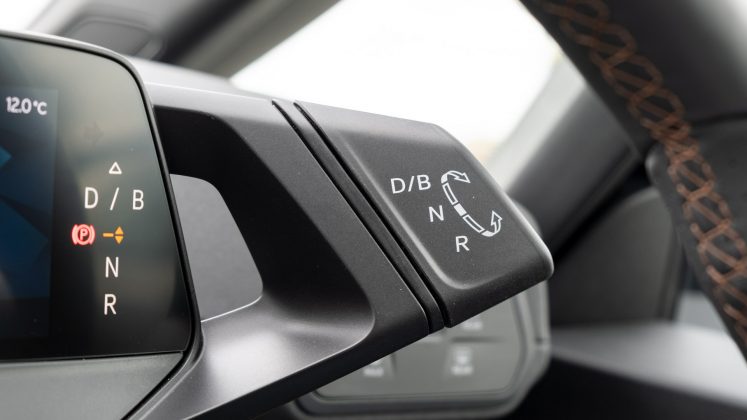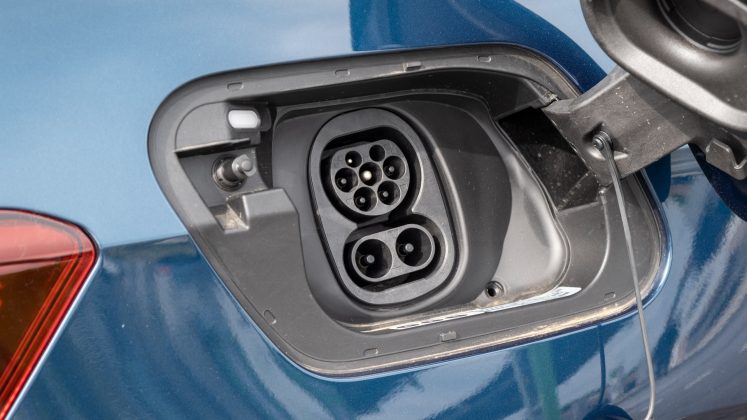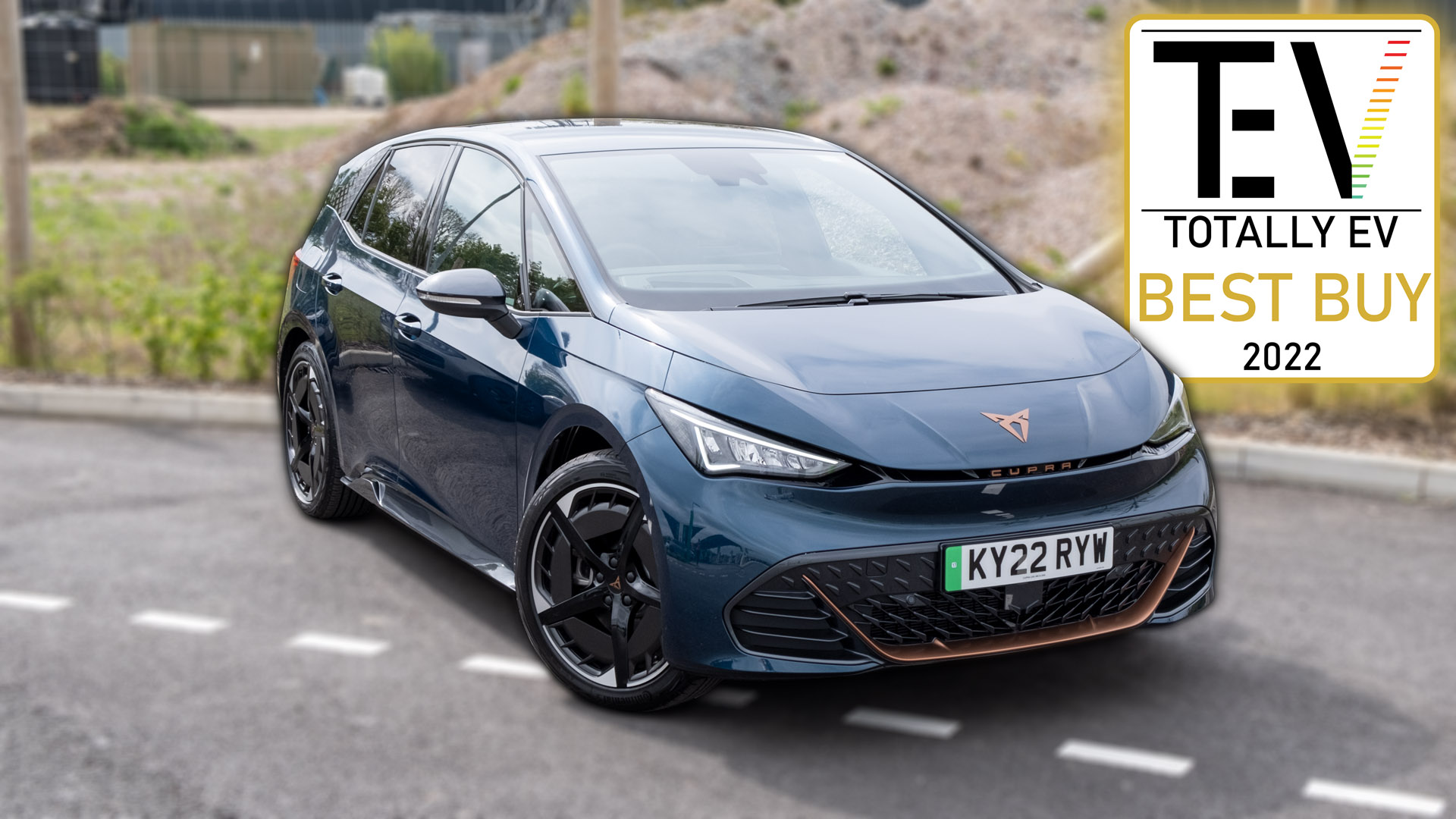The Cupra Born was initially unveiled as a concept in 2019 at the Internationale Automobil-Ausstellung (IAA), where it was named the Seat el-Born. The hatchback all-electric car is based on Volkswagen Group’s MEB (Modularer E-Antriebs-Baukasten) platform; it shares many similarities with the VW ID.3 and in this review, we’ll be comparing the two among other EVs on the market.
If you’d prefer to watch a review of the Cupra Born, head on over to our YouTube channel.
Cupra Born price & competition
At the time of writing, the Cupra Born is competitively priced at £34,715. It’s available in three trim levels: V1, V2 from £36,635 and V3 from £38,390. Here, you’ll also find the V2 and V3 in both a 58 kWh and 77 kWh battery configuration, and with e-Boost. The latter package comes as standard on the 77 kWh models, but is an optional extra in the 58 kWh trims; for around £800, e-Boost shaves the 0-62mph time (6.6s down from 7.3s) as it unlocks 20 kW of additional power and upgrades the front disc brakes.
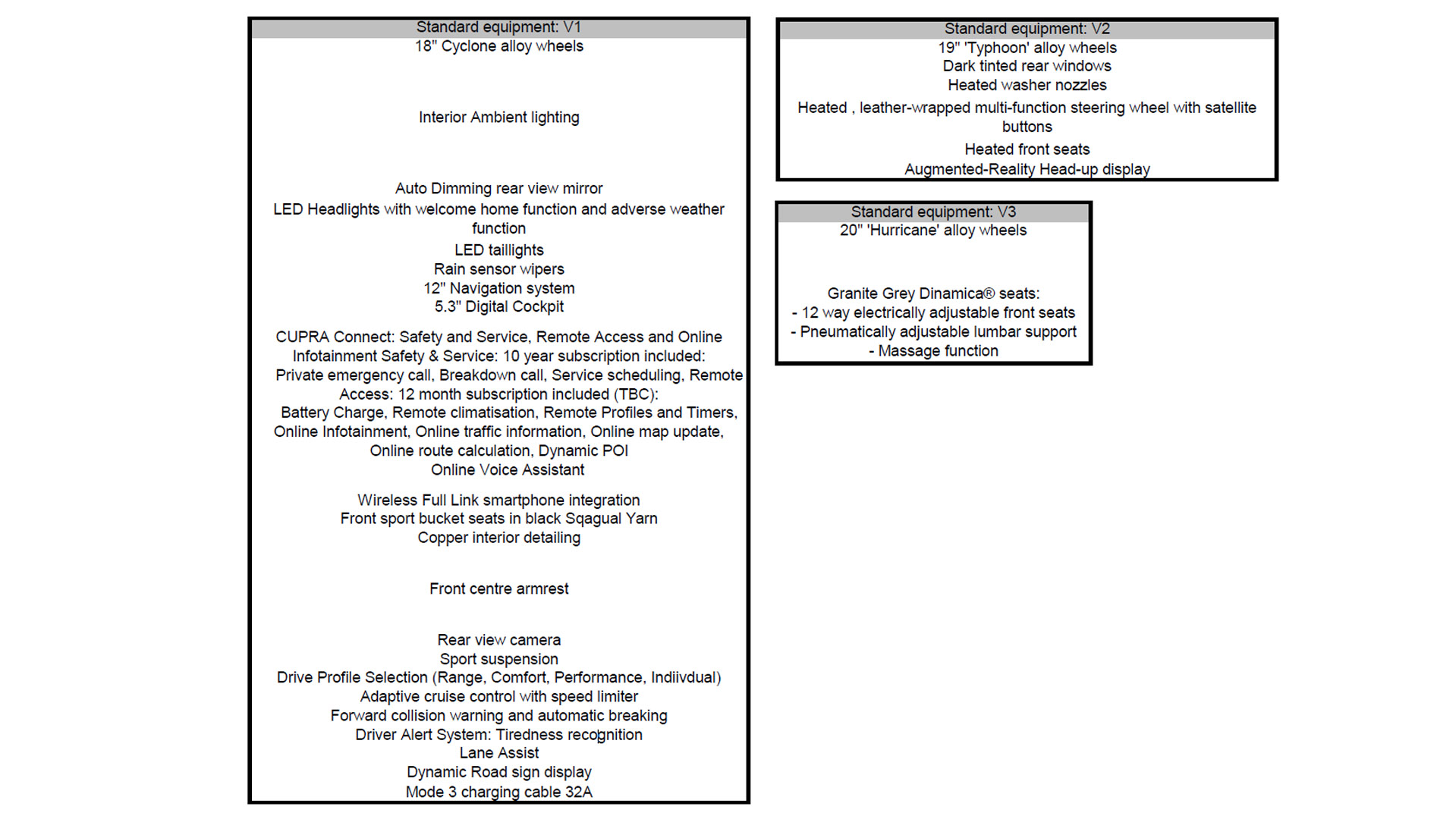
Find the best Cupra Born deals
When it comes to its rivals, there are a fair few all-electric vehicles to consider: the BMW i4 from £51,905; the Tesla Model 3 from £45,990; the Polestar 2 from £41,900; the VW ID.3 from £35,835; the Honda e from £34,420; the BMW i3 from £33,805; the Hyundai Ioniq Electric from £30,550; the Renault Zoe from £30,495; the Mini Electric from £28,500; Vauxhall Corsa-e from £27,055; the Nissan Leaf from £26,995; the Fiat 500 Electric from £23,835; and the Smart fortwo coupé from £20,370.
Read next: Volkswagen ID.3 review: The best electric hatchback?
Cupra Born exterior review
Depending on which trim level you choose, you’ll get 18″, 19″ or 20″ alloys – the latter are pictured on the V3 trim, where they fit the vehicle’s sporty design. Looks are subjective, but we suspect many, like us, will prefer the snazzier finish of the Cupra over the ID.3. The front bonnet slopes inwards to provide an aggressive profile, the side skirts protrude from the vehicle’s shell, while the rear has an accentuated rear diffuser, spoiler and taillight design.
In terms of your colour choices, it comes in ‘Vapor Grey’ as standard. The metallic ‘Glacial White’, ‘Geyser Silver’, ‘Quasar Grey’ and ‘Rayleigh Red’ cost £565, while the pictured premium metallic finish, ‘Aurora Blue’ costs £840.
Read next: The best dash cams to mount inside your vehicle
Cupra Born interior review
It’s not only the exterior that has had a makeover, but the interior has changed too, albeit not radically over its VW sibling. Cupra has still retained the fiddly capacitative touch sliders for climate controls and media volume by the centre-weighted display and frustratingly, has part-haptic touch controls on the steering wheel. Here, the media volume controls that are found towards the extremities, are prone to accidental input when cornering. Similarly, there’s a touch-based panel for headlight controls. It’s frustrating, to say the least, and we wish the manufacturer had opted for traditional physical buttons, instead.
Elsewhere, the rear windows also need to be initiated by pressing the ‘Rear’ touch button located on the driver’s door. This will then make the two physical levers found below it operate the rear windows only; as a result, the Volkswagen Group has removed two buttons – baffling.
Thankfully, you still have two traditional stalks behind the steering wheel and an intuitive gear selector located to the side of the 5.3″ instrument cluster. On the subject of technology, the smaller panel will display navigation data alongside key driving information. To heighten the experience, in the V2 trims and above you’ll find an Augmented Reality Head-up Display (AR HUD) – it displays warning lines, such as when you’re veering off-piste, and with the use of navigation data, can indicate the direction you need to be in via artificial arrows. Clever stuff.
Buy a car phone mount on Amazon (Affiliate)
Better still, the Cupra Born supports Android Auto and Apple CarPlay in both a wired and wireless format – the instrument cluster and HUD also display navigation data from these third-party operating systems. Interacting with the 12″ display is easy as the menu system is smartly laid out and the larger size is appreciated – the VW ID.3 sports a 10″ panel, instead.
However, much like its sibling, we found the infotainment system a little sluggish, namely when compared to the systems found within its rivals. Worse still is the standard speaker configuration – like the ID.3, the Born has five speakers located at the front of the cabin – there are no rear speakers. If you want to add rears, you’ll need to fork out £450 on the Beat Audio upgrade, which takes the tally up to nine with a power output of 395 Watts.
Read next: Tesla Model 3 review (2021 facelift): Should you buy into the hype?
Cupra Born storage review
Given the slight interior redesign, the storage areas within the cabin have been altered. The centre console within the Cupra Born is attached to the dashboard, whereas the ID.3 has a slimmer profile that gives a sense of spaciousness at the front.
Nevertheless, you’ll still find two cupholders, a small storage bay, a slopped area for your smartphone – where the non-slip area doubles up as a wireless phone charger if you opt for the £515 Tech (M) Pack – and a narrow compartment within the centre armrest. Here, you’ll also find two USB Type-C ports. There are also two USB ports found towards the rear of the centre console, though, these are used for charging only.
The front door bins will accommodate a 500ml bottle alongside a small-to-medium-sized purse or wallet, while the rear two are a lot more limited. There are two cupholders found within the rear pull-down armrest.
Of course, when it comes to storage there’s the boot, where the Cupra Born has a 385-litre capacity, and with the seats down extends to 1,267 litres. Unsurprisingly, it’s identical to the ID.3.
As for its competitors: Hyundai Ioniq 5 (520/1,587 litres); BMW i4 (470/1,290 litres); Nissan Leaf (435/1,161 litres); Hyundai Ioniq Electric (357/1,417 litres); Tesla Model 3 (425/1,235 litres); Polestar 2 (405/1,095 litres); Renault Zoe (338/1,225 litres); Mini Electric (211/731 litres); Vauxhall Corsa-e (267/1,076 litres); VW e-up! (251/951 litres); Seat Mii Electric (251/923 litres); Mini Electric (211/731); Honda e (171/571 litres); Fiat 500 Electric (185/550 litres) Smart EQ Fortwo (260/360 litres).
In terms of practicality, it’s got a hatchback design with 60:40 split-folding rear seats and an integrated ski latch. There’s an underfloor compartment for your charging cables too, though, there’s no frunk (front bonnet) space. Our only complaint is that the cargo area is not flat, where there’s a large step between the rear seats and boot floor meaning it’s a bit more cumbersome to transport elongated goods.
Read next: Fiat 500 Electric review: Best small electric car?
Cupra Born comfort review
This brings us to comfort, where the Born can seat up to five occupants in the 58 kWh models, but drops to four in the 77 kWh models – the latter variant has a fixed armrest compartment at the rear of the cabin.
The main four seats are all accommodating and comfortable, with the front two being manually adjustable in the V1 trim, then become heated in the V2 trims, and have 12-way electronic controls plus heating functionalities in the V3 trims. A heated steering wheel is also fitted standard in the V2 and V3 trims. Elsewhere, you can add a fixed panoramic sunroof for an additional £925, which brings additional light into the cabin.
In terms of legroom, it’s sufficient at the rear of the cabin but due to the diagonally-wedged rear seats, it can result in a bit of strain on your occupant’s quad muscles. If, however, there’s no rear middle passenger, they can stretch out their legs thanks to a near-flat footwell design. As for headroom, 6-foot 2-inches (188cm) individuals will be sat comfortably, but those who are taller might feel a little henned in. Headroom and legroom at the front of the cabin are a non-issue.
We’d also like to point out that the Cupra, much like its sibling, has a pressure sensor found within the driver’s seat. This makes for an incredibly intuitive experience as a single occupant as one doesn’t have to press an on/off button to power on the vehicle.
However, if you have rear occupants and say you, the driver, momentarily step outside the vehicle, you’ll find the infotainment system and climate control both power down, leaving those sitting at the back without any entertainment or a means of cooling or heating the cabin. The only way to counteract this is to have the remote within the cabin and for the rear occupants to reach over to the on/off button found by the steering column – it’s not very practical.
As for cabin noise, there’s a small amount of tyre noise that creeps in, but it’s otherwise kept down to a minimum making for a serene driving experience. Using a sound meter we recorded 52-55 dBA, while driving at 20-30mph; 60-63 dBA, while driving at 40mph; and 66-68 dBA when at 70mph – making it among the quietest cabins we’ve tested.
Read next: BMW i4 review: Is the i4 eDrive40 better than the i4 M50?
Cupra Born performance review
Another standout element for the Cupra is its driving characteristics; due to it operating on a rear-wheel drive (RWD) system, it’s plenty of fun to drive around windy country roads. There’s a great sense of feeling when going around corners, especially when compared to most of its front-wheel drive (FWD) rivals. There’s a minimal amount of body roll, where its suspension setup, in our opinion, is perfect; from soaking up road anomalies to holding its stature on windy country roads.
While we can’t say it’s the best driver’s feel that one can attain in an EV, as the Porsche Taycan, Audi e-tron GT and BMW i4 reign supreme in this department, it’s still up there with the very best including the VW ID.3 that operates a near-identical setup. The Cupra does, however, one-up its sibling by offering the ability to add Dynamic Chassis Control (DCC) as a £790 option. This aims to better the suspension setup of the vehicle, though, the model on review didn’t have it fitted, so one can only imagine it’ll further heighten the driving experience.
Find the best Cupra Born deals
In terms of raw performance, the 58 kWh model that we have on review has a rear-mounted motor that outputs 150 kW (201 hp) of power, 310 Nm of torque and has a top speed of 100mph. We had it tested using Racelogic’s Vbox Sport from 0-60mph in seven seconds; a tad slower than the 6.45s we achieved with the similar spec VW ID.3. Of course, one can shave down this time by opting for the e-Boost model or 77 kWh battery size, which both have 170 kW (231 hp) of power instead.
In terms of range, we were left impressed. In our mixed driving tests, we achieved 210-220 miles, which is a little less than the VW ID.3 at 230 miles, but is nonetheless impressive for a vehicle of its size and price.
Put into perspective, the single-motor Polestar 2 achieved 250-270 miles, the BMW i4 eDrive40 240-260 miles, the entry-level Tesla Model 3 230-250 miles, the Nissan Leaf and Renault Zoe both manage 200 miles, the Fiat 500 Electric and Hyundai Ioniq Electric both net 140-160 miles, the Vauxhall Corsa-e 130-140 miles, the Volkswagen e-Up! and Seat Mii Electric 120-140 miles, the Mini Electric 100-110 miles, the Honda e 80-90 miles and the Smart EQ Fortwo 70-75 miles.
Better still, the Cupra on review didn’t have a heat pump fitted, which is a £925 option. If we were to add this into the equation, we could have achieved a better figure – pushing closer or past, the manufacturer’s 260-mile claim.
In order to recoup energy back into the battery pack, the Cupra Born, uses regenerative braking – this can be initiated by flicking to B-mode on the gear selector. However, the level of deceleration is quite weak at around 0.3g, meaning you’ll have to resort to using the physical brake pedal to come to a standstill – one-pedal driving isn’t quite feasible, unlike a few of its competitors.
It’s also rather cumbersome to have to switch to this mode each time you step inside the cabin. Again, its rivals offer a toggle via the infotainment system and the ability to adjust the levels on the fly by using the flappy paddles – both of which aren’t present on the Cupra Born.
Of course, you can plug it in, where its CCS port supports up to 135 kW (120 kW on the 58 kWh model), meaning it’ll take just 35 minutes to go from empty to 80% at an appropriate charge point. On a 50 kW charger, this time increases to 55 minutes and 70 minutes on the 58 and 77 kWh models, respectively. A 7 kW wallbox charger will take you from zero to 100% in 7hrs 30mins or around nine hours on the larger battery pack model.
Read next: Audi e-tron GT review: Better than the Porsche Taycan?
Cupra Born safety review
As for safety, the Cupra Born has yet to be put through its paces in Euro NCAP’s rigorous crash tests, but we suspect it’ll score similar to the VW ID.3 that achieved 5/5 stars in 2020.
In terms of your driver assistance systems, as standard, you get: Adaptive cruise control with speed limiter, Pedestrian and cyclist protection, Turning Assist, Forward collision warning and automatic breaking, Driver Alert System, Dynamic Road sign display and Lane Assist. The latter is enabled each time you step inside the cabin and is rather cumbersome to disable, as you’ll need to faff around with the infotainment system. We had the same complaint about the VW ID.3.
When it comes to visibility, it’s excellent throughout the cabin; the cut-out by the A-pillars provide better vision when cornering, while the slopped bonnet makes it easy to see what’s in front of you. Front and rear parking sensors alongside a rearview camera also come fitted as standard. Should you want to better the experience, you can opt for the £740 Tech (L) Pack, which adds Park Assist, and Car 2X technology that allows the car to communicate with other compatible vehicles so that you are alert of any dangers.
Read next: Polestar 2 review: Tesla Model 3 and BMW i4 beater?
TotallyEV’s verdict on the Cupra Born
On the whole, the Cupra Born is very similar to the VW ID.3, and in our opinion, is the better pick. It’s sexier, can be faster and more responsive on the road, and yet still goes the distance. Of course, there are some quirks we dislike about both vehicles, such as the inclusion of touch-sensitive buttons and the omission of rear speakers in its standard configuration.
Find the best Cupra Born deals
Nevertheless, it’s still an excellent all-electric hatchback and among one of the best EVs on the market and one that we’d actively recommend. As such, the Cupra Born receives TotallyEV’s coveted Best Buy award.
Would you pick the Cupra Born over the VW ID.3? Let us know in the comments section below or via social media; we’re on: YouTube, Instagram, Facebook, Twitter and LinkedIn.

